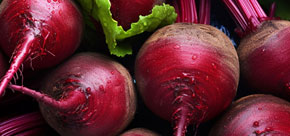Fresh Produce Standards
PRODUCE PACKING Version 5.1
Click to view
Key – Those standards which have greater significance (all other standards are normal)
Recommendation – Those which do not affect certification
New – A completely new standard which the member must now adhere to
Revised – A standard that has changed and requires the member to take some different or additional action to before
Upgraded – The standard has been upgraded to a Key standard or from a Recommendation to a full standard
Appendix – Referenced in ‘How you will be measured’. Indicates that additional information is provided in the Appendices, which are available at the end of each section.
Cropping Categories Fresh Produce
Category 0 - Those you can eat raw and have a significant risk or history of pathogen contamination
Category 1 - Those you can eat raw and which do not have a protective skin that is removed before eating; they may also have a significant risk or history of pathogen contamination.
Category 2 - Those you can eat raw and which either have protective skin or grow clear of the ground, or that have no history of pathogen contamination.
Category 3 - Those that the customer always cooks.
An up-to-date list of the crop categories can be found on the Red Tractor website.
PR.PP.1
Written hygiene policies and procedures must be in place, communicated to personnel and compliance monitored.
How you will be measured
PR.PP.1.a
PR.PP.1.b
- Hygiene Policy
– Plaster issue record
PR.PP.2
All personnel handling fresh produce must be trained in personal hygiene requirements.
How you will be measured
PR.PP.2.a
PR.PP.2.b
PR.PP.2.c
Training records/agency labour training records
PR.PP.3
All visitors entering production areas must be made aware of the hygiene and Health and Safety requirements.
How you will be measured
PR.PP.3.a
PR.PP.3.b
PR.PP.3.c
PR.PP.3.d
Visitor/contractor Hygiene Policy
PR.PP.4
Signs must be clearly displayed in the packing facilities which
describe the main hygiene instructions for workers and visitors.
How you will be measured
PR.PP.4.a
PR.PP.4.b
PR.PP.5
Personal Protective Equipment (PPE) appropriate to the crop type being produced must be provided and maintained in good condition.
How you will be measured
PR.PP.5.a
PR.PP.5.b
PR.PP.5.c
PR.PP.5.d
PR.PP.5.e
PR.PP.5.f
PR.PP.5.g
PR.PP.5.h
PR.PP.5.i
- PPE requirement policy
– Glove use procedure
– Contract laundry audit report
PR.PP.6
Clean and maintained facilities that are accessible to all personnel and enable them to ensure an appropriate degree of personal hygiene must be provided.
How you will be measured
PR.PP.6.a
PR.PP.6.b
PR.PP.6.c
PR.PP.6.d
PR.PP.6.e
- Hygiene Policy
– Toilet cleaning records
PR.PP.7
Written procedures for reporting any infectious diseases must be in place and communicated to personnel and visitors
How you will be measured
PR.PP.7.a
PR.PP.7.b
PR.PP.7.c
PR.PP.7.d
PR.PP.7.e
PR.PP.7.f
- Return to work Policy
– Hygiene policy
– Visitor/Contractor Hygiene Policy
– Return to work assessments
– Training records
PR.PP.8
Produce handling, loading, transporting, packing and storage facilities, including boxes, must be kept clean and routinely maintained to prevent product contamination.
How you will be measured
PR.PP.8.a
PR.PP.8.b
PR.PP.8.c
PR.PP.8.d
PR.PP.8.e
PR.PP.8.f
PR.PP.8.g
PR.PP.8.h
PR.PP.8.i
- Cleaning schedules
– Cleaning records
– Grader/washing equipment/vehicle maintenance records
– Training records
PR.PP.9
Water used post-harvest in direct contact with the product (including ice) must be deemed acceptable by the Water Matrix and Risk Assessment and is stored in a clean container.
How you will be measured
PR.PP.9.a
PR.PP.9.b
PR.PP.9.c
Risk Assessment
PR.PP.10
Water analysis is completed by an ISO 17025 laboratory, test results are monitored and actions taken on poor results.
How you will be measured
PR.PP.10.a
PR.PP.10.b
- Laboratory accreditation information (paper record or electronic)
– Water testing results
PR.PP.11
Chemicals and lubricants used must be authorised for food industry use and technical data sheets held and stored in a dedicated area.
How you will be measured
PR.PP.11.a
PR.PP.11.b
Technical data sheets
PR.PP.12
Controls must be in place to protect product from contamination with any broken glass, hard plastic, wood or other foreign bodies.
How you will be measured
PR.PP.12.a
PR.PP.12.b
PR.PP.12.c
PR.PP.12.d
PR.PP.12.e
PR.PP.12.f
- Glass and Hard Plastic Policy/Procedure
– Glass and hard plastic register
– Glass and hard plastic check records
– Pre-production check sheets
– Training records
PR.PP.13
Controls must be in place to prevent the risk of product contamination from knives, cutting blades, maintenance tools, gloves and any other relevant equipment.
How you will be measured
PR.PP.13.a
PR.PP.13.b
Knife issue record
PR.PP.14
Containers/crates/boxes used to store product must be dedicated for that purpose.
How you will be measured
PR.PP.14.a
PR.PP.15
Controls must be in place to ensure packaging is suitable for product, clean and free from contamination.
How you will be measured
PR.PP.15.a
PR.PP.15.b
PR.PP.16
Controls must be in place to ensure that the correct packaging and coding is applied to all packed product.
How you will be measured
PR.PP.16.a
PR.PP.16.b
Documented controls for packaging
PR.PP.17
Equipment used for weighing or temperature control of product must be calibrated in line with equipment suppliers' recommendations and verified where deemed necessary by risk assessment.
How you will be measured
PR.PP.17.a
- Calibration records
– Verification records
PR.PP.18
Controls must be in place to ensure that products are not contaminated with allergens.
How you will be measured
PR.PP.18.a
PR.PP.18.b
PR.PP.18.c
- Allergen risk assessment
– Training records
PR.PP.19
Where preventative actions cannot guarantee a product is not contaminated with a known allergen on site, the product is labelled.
How you will be measured
PR.PP.19.a
Product labels
PR.PP.20
It is recommended that forklifts and other driven equipment used within the packhouse are maintained to avoid product contamination, with special attention given to emissions
More Standards
Download Fresh Produce Standards Manual
Download Fresh Produce Standards Manual – Including GLOBALG.A.P Module
Download the changes to the Fresh Produce Standards from 1 February 2025
Download watercress protocol
Download hops protocol
Useful Documents
UK Crops grown and risk categories
Fresh Produce assessment structure
